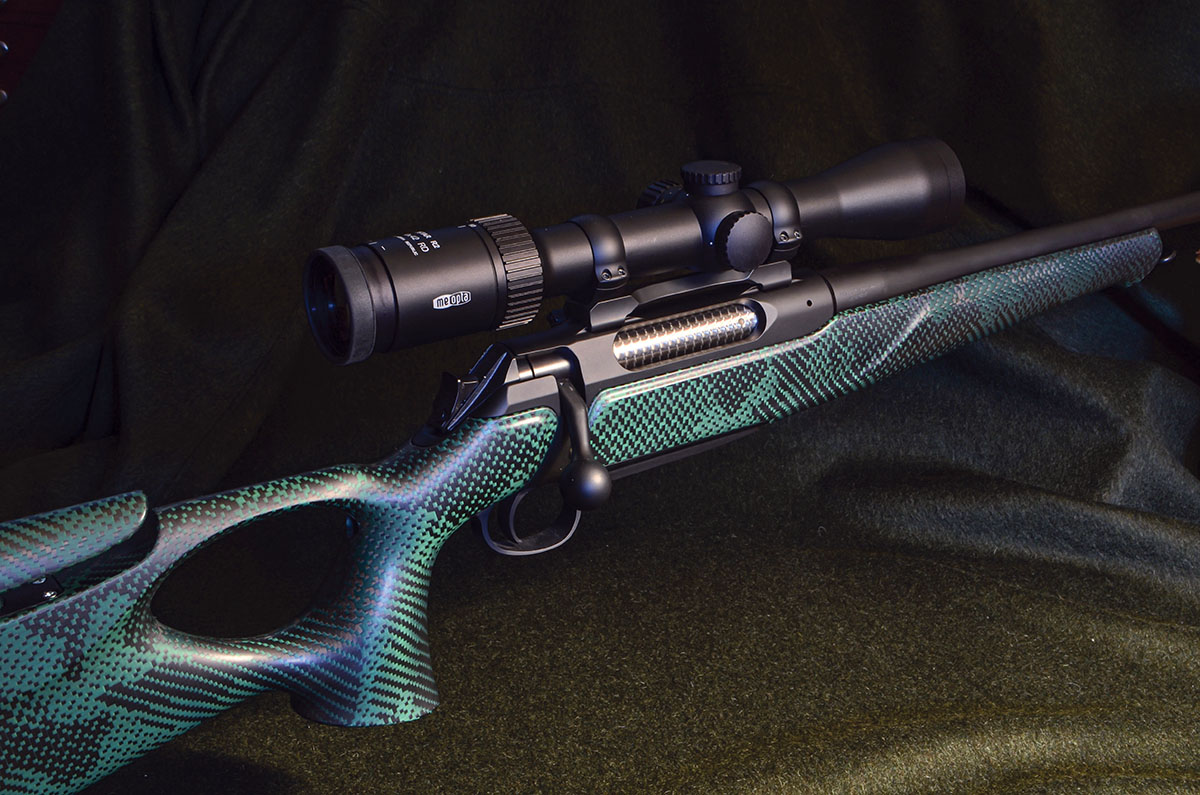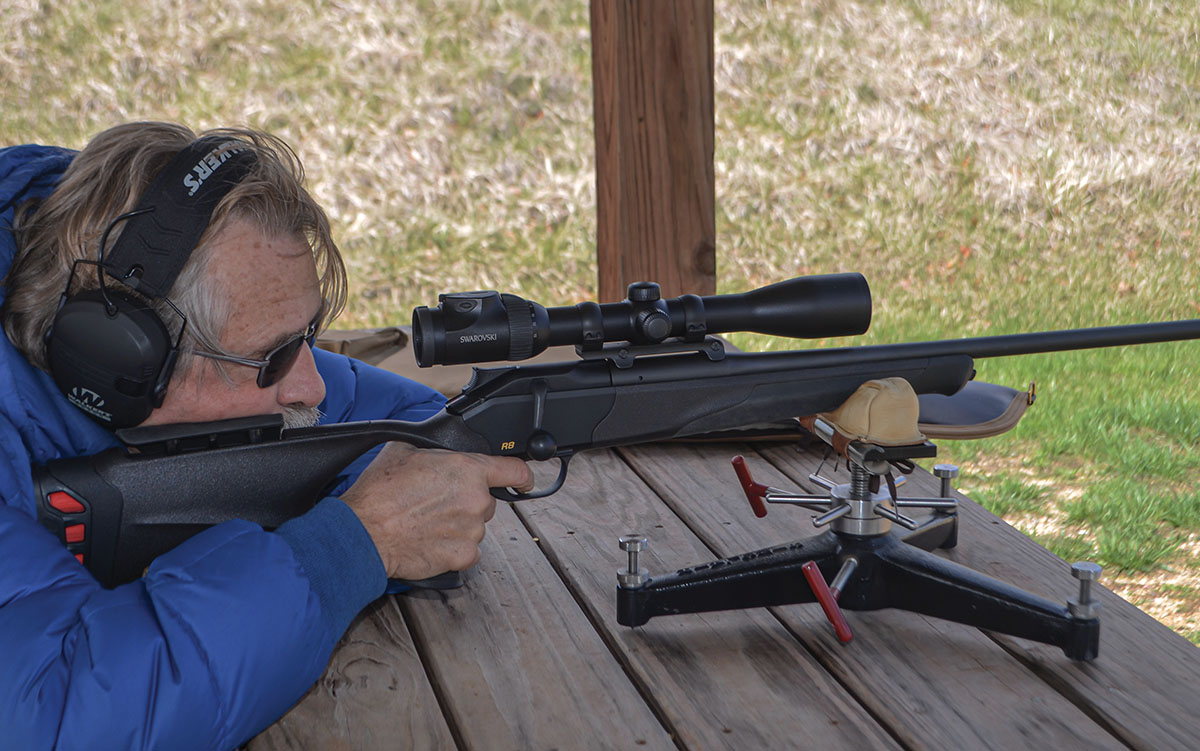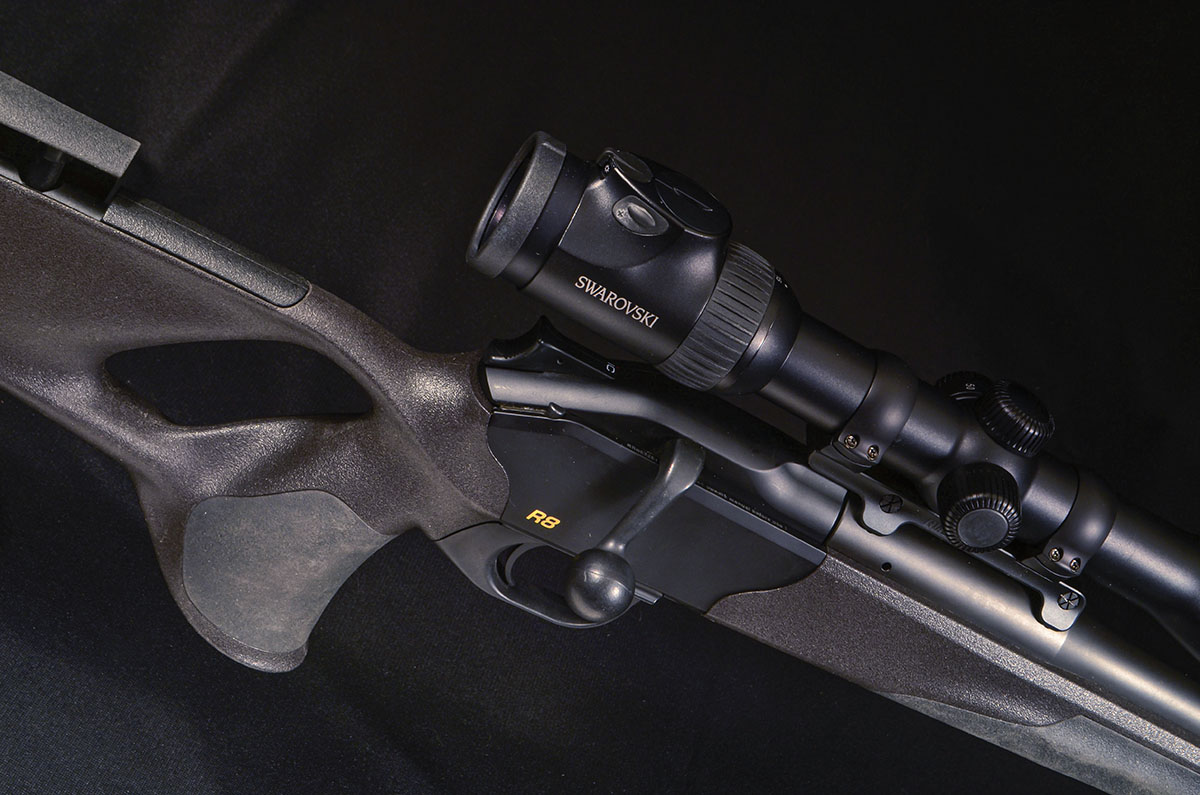Walnut Hill
Synthetics Cosmetics
column By: Terry Wieland | March, 25

Since then, I’ve stumbled over many more synthetic stocks. The very word “plastic,” although it has honorable antecedents in the English language, has become such a pejorative that manufacturers looked for (and insisted upon) alternatives like “nylon” (the Remington Nylon 66), fiberglass, Kevlar and the later generics, composite and synthetic.
The Daisy Red Ryder was made in an era when plastic still denoted modern, up-to-date, cutting-edge technology, while plain old wood was hopelessly passé. Only years later did Daisy and other makers of air rifles begin to tout “genuine wood” stocks as a status symbol on their more expensive models.
Anyway, this was the reputation riflemakers had to live with – and live down – from the 1960s through the 1990s as they attempted to convince shooters that a stock made of anything except walnut could be good.


Finally, synthetic stocks were simply not interesting, and if you’re a writer as well as a shooter, having something interesting to tell your readers is very important.
Not surprisingly, the first group of riflemen (and women) to embrace synthetic stocks were benchrest people. They are interested in one thing and one thing only: Accuracy. Ergonomics hardly enters into it, especially in the “unlimited” classes. Pinpoint accuracy became an ever-larger consideration in the sale of all rifles – a trend that began in the 1980s and continues to this day. Synthetics continued to make slow but steady inroads everywhere rifles were made.
Above, I mentioned the impossibility of altering a synthetic stock. With a rifle, this is considerably less important than with a shotgun, where the buttstock functions as an integral part of the sighting mechanism, for lack of a better term.
Many years ago, I received a letter from a reader who wrote that he was a 17-year-old serious gun guy who, having surveyed the offerings here and abroad, concluded that James Purdey & Sons would only be making a true “best” gun when they offered one with a fiberglass stock. Unsure exactly how to respond to such an absurd notion, I filed the letter where it belonged. Now, I wish I’d kept it so I could quote it exactly and at length because it betrayed a total lack of understanding of shotguns, their stocks and how it all fits together.
Having a completely unalterable buttstock on a shotgun is the same as having a rifle with a rear sight that cannot be adjusted. It might work well, but most probably, it will not.
A Purdey with a stock of French walnut can be shortened, lengthened,and bent left or right, up or down. It can be lightened by drilling out some wood or made heavier with lead inserts, moving the balance of the gun this way or that. All this, and all the while feeling and looking like a dream. (Here, I’m not talking about the adjustments built into stocks for trap guns, where the shooter can fiddle endlessly but permanently fitting the gun to its user, like a tailor-made suit.)
Little of this is required with most rifles, which is why synthetic rifle stocks make a lot of sense, regardless of appearance. And lately, these stocks appear more and more with movable combs and buttplates, which we will get to in a moment.

Like a shotgun, however, a hunting rifle requires certain handling qualities, even if it does nothing but sit in a deer stand and shoot from a rest. European hunters – Germans and Austrians, particularly – recognized this early on, largely because shooting driven boar is such a dominant part of their hunting tradition.
We tend to envision European hunters in high stands, sipping brandy and waiting for a glorious red stag to happen by, and there is an element of that. But driven big game is something else again, and driven boar are in a class by themselves. When a herd of wild boar comes crashing toward you through the brush, the action is wild and woolly. It’s a bit like facing a pack of red grouse bearing down all around you but with bigger and potentially dangerous animals and high-powered rifles.
While the rifles may be fitted with scopes, the shooting is fast, furious and more akin to instinctive shotgun shooting than precise rifle shooting.
This is where a stock that fits like a glove and is both instinctive and ergonomic is important. The first one I saw that really fit the criteria was on a Sauer 404. It was carbon fiber and had the shimmering scaled appearance of a serpent, but its thumb-hole configuration handled beautifully. A few years later, a modification of the Blaser R8, this one called the Ultimate, came along, with a similar thumb-hole stock with an adjustable comb.
Since then, I’ve seen and shot rifles from Springfield Armory, Christensen Arms and AG Composites, among others, that were fitted with some sort of synthetic or the current rage, carbon fiber stocks. That not only shot superbly but felt really good, which is equally important, to me, really interesting.
To go back a few years to the bad old days of early synthetics, as mentioned above, if they didn’t fit, there was little or nothing you could do about it. Today’s synthetics, such as the one on the Blaser R8 Ultimate, has a comb that can be raised or lowered to align your eye with the sights, as well as lengthened or shortened slightly.
If I have a complaint about most of these – you will notice I never seem to be short of complaints – it stems from my experience with such stocks on trap guns. The easier they are to adjust, the easier they are to accidentally change dimensions, and usually when you want it least. Unless you are in a big-money competition, missing a clay because a screw loosens and your comb suddenly drops is not life shattering. Have that happen with a herd of incoming boar or, vastly worse, a charging Cape buffalo and the result could be dire.
Fortunately, the newer adjustable rifle stocks seem to have been either designed by or at least thoroughly tested by, experienced and serious riflemen. I have yet to see one come loose or start self-adjusting amid frantic action.
We have finally reached an era of synthetics that are good looking, ergonomic and interesting. I can’t say they’ve made me forget all about that old Daisy Red Ryder with its plastic stock, but at least now, it’s not the first thing that pops into my mind when you mention synthetics. That’s progress.


